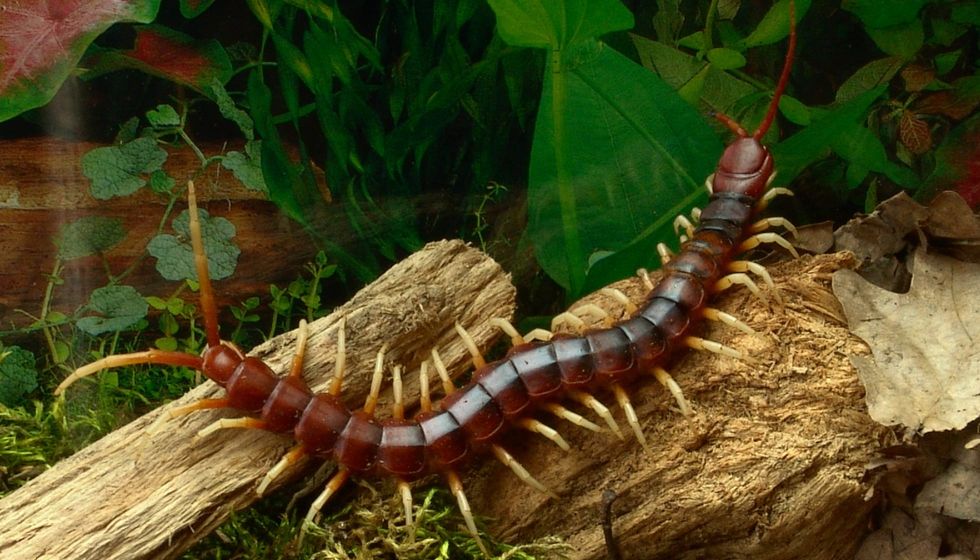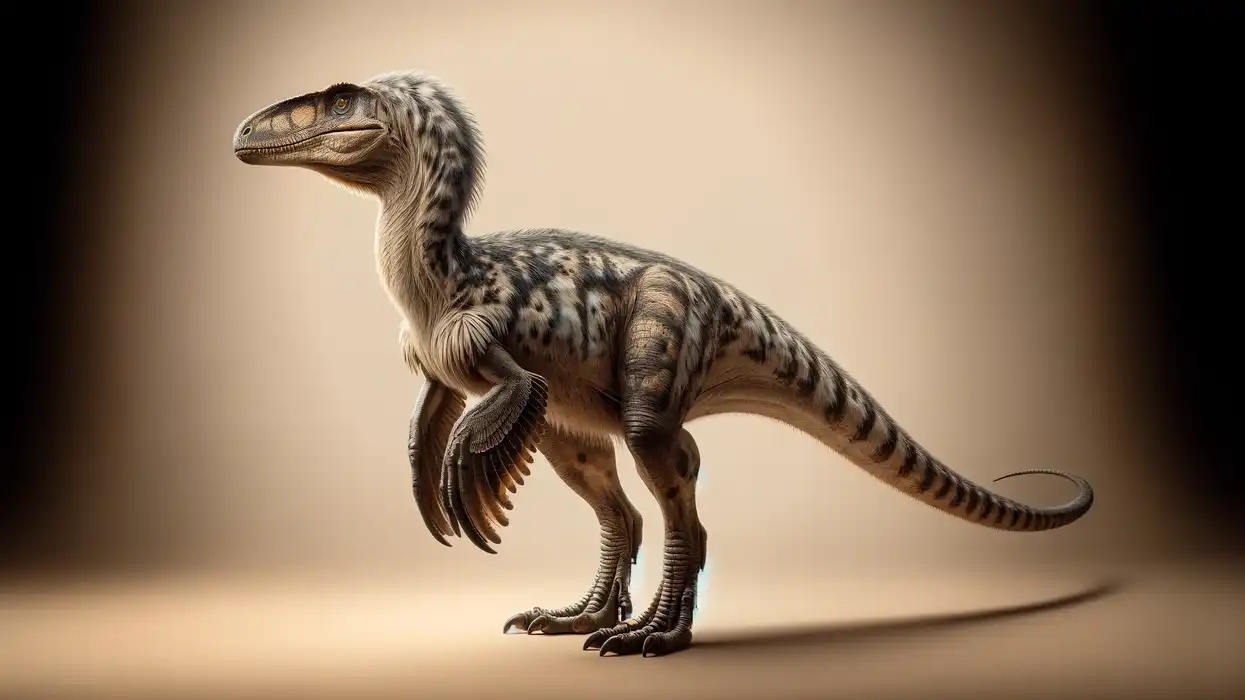Giant centipedes (Scolopendra gigantea) are the world's largest centipedes. They live in South America.
Their bodies can reach a length of 11.8 in (30 cm). The body of this species of centipedes is divided into numerous segments and they also have multiple pairs of legs. The venom produced by these centipedes can be quite dangerous to their prey and also to humans.
The centipedes belonging to this species are also known as Amazonian giant centipedes or Peruvian giant yellow-leg centipedes. Unlike the common house centipede, which exclusively eats insects, the giant centipede is known to eat a wide range of large animals.
But both the house centipede and giant centipede have the same kind of respiratory mechanism, because of the presence of spiracles (openings through which they breathe) on their body. It is quite difficult to distinguish between the males and females of this species, due to their anatomy.
To learn more interesting facts about these giant arthropods, continue reading! If you like this article, you can also read about the giant African millipede and the green stink bug.
Giant Centipede Interesting Facts
What type of animal is a Giant Centipede?
The giant centipede is a kind of arthropod. It is the largest centipede to exist.
What class of animal does a Giant Centipede belong to?
The giant centipede belongs to the class Chilopoda. They are a member of the Scolopendridae family and genus Scolopendra.
How many Giant Centipedes are there in the world?
The exact number of giant centipedes that exist in the wild is not known. But there is no data to indicate that their population is under any threat.
Where does a Giant Centipede live?
Giant centipedes are found in South America. Some of the countries where these centipedes are found are Brazil, Columbia, Trinidad, and Aruba.
What is a Giant Centipede's habitat?
This species of centipedes prefer living in humid environments. They are most commonly found in tropical and sub-tropical forests. Their habitat also includes grasslands or savanna. They like living under rocks, and in leaf litter, soil, or rotten wood.
Who do Giant Centipedes live with?
This species of arthropods are known to be solitary. So, they can be seen alone in the wild. Even in captivity, the giant centipedes are preferably kept alone.
How long does a Giant Centipede live?
Giant centipedes or Scolopendra gigantea can live for one to six years.
How do they reproduce?
To successfully reproduce, the male centipedes form a small silk pad and deposit their sperms on it. This is found by the female centipedes, who absorb the sperms and let the fertilization take place.
After fertilization has occurred, the females lay eggs in a burrow in the soil. This species is also known to display parental care, which is common to most centipedes. The females care for and clean the eggs to make sure there is no fungal growth on them.
What is their conservation status?
The conservation status of the giant centipedes (Scolopendra gigantea) has not been listed by the International Union for Conservation of Nature or the IUCN. However, their main threat is from the predators who prey on them. Some of their most common predators are scorpions, mongooses, snakes, and birds.
Giant Centipede Fun Facts
What do Giant Centipedes look like?

The bodies of the giant centipedes are divided into numerous segments and each segment appears flattened. Each of the segments is provided with a pair of legs, and in total, they have 21-23 pairs.
Each pair of legs is yellow in color. Their head is covered by a flat shield-like structure, and they also have antennae made up of many joints. They are usually yellow, red, black, yellow, or brown in color and also have dark stripes at the end of each segment.
How cute are they?
These animals do not really appear cute. However, certain special life processes they have can be interesting to learn about.
How do they communicate?
The exact methods of communication in the giant centipedes are not known. But in general, centipedes are known to communicate using their sense of touch and smell. They are also able to feel vibrations.
How big is a Giant Centipede?
Giant centipedes are the largest centipede and they can grow as long as 11.8 in (30 cm). They are three to four times longer than a house centipede.
How fast can Giant Centipedes move?
Giant centipedes can move quite fast for a centipede, with the help of their many legs. They can attain a speed of nearly 0.9 mph (1.4 kph), especially when hunting.
How much does a Giant Centipede weigh?
The exact weight of a giant centipede is not known. However, since they are the largest centipede, it can be assumed that they weigh more than most other centipedes.
What are their male and female names of the species?
The male and female of this species are known as male giant centipede and female giant centipede, respectively.
What would you call a baby Giant Centipede?
A baby giant centipede is simply known as a larva.
What do they eat?
Giant centipedes have a carnivorous diet. Not only does this animal feed on smaller insects and invertebrates, but they are also known to prey on lizards, birds, frogs, snakes, and mice. They can eat anything that they have been able to catch with the help of their giant size and deadly venom.
Are they harmful?
Giant centipedes carry a dangerous venom that can be quite harmful to humans, as well. Their bite can cause a sufficient amount of pain.
Would they make a good pet?
It would be quite tricky to keep a giant centipede as a pet. They require certain conditions like humid and warm housing and live food to live and thrive. Nevertheless, such species are becoming a popular choice among people to be kept as pets.
Did you know...
Giant centipedes are capable of climbing caves in order to prey on bats. They use their legs to hang downwards from the top of the caves and kill bats for food.
The name 'centipede' means 100 legs, but centipedes never have 100 legs, just like these giant centipedes.
Like all centipedes, the giant centipede also does not have a waxy coating on the upper surface of its body. Hence, they are prone to dehydration.
Different Types Of Giant Centipede
The giant desert centipede (Scolopendra heros) is another kind of centipede having a length between 6.5-8 in (16.5-20.3 cm) and is the largest centipede found in North America. Their head and body appear in various shades of red in color. They are provided with 20 pairs of legs. A pair of their rear legs are used to inject venom.
Tiger centipedes (Scolopendra polymorpha) have a length of nearly 7 in (17.8 cm) and are found in northern Mexico and the southwestern United States. Their head is red, brown, or orange in color. Since each segment in their body has a stripe, they are known as tiger centipedes.
Ethmostigmus rubripes are the largest centipedes seen in Australia. This species is seen all throughout Australia and in some places like Indonesia, Southeast Asia, and New Guinea, among others. They can grow over 7.5 in (19.1 cm). They have 21 or 23 pairs of legs.
Some other giant centipedes are the Indian giant tiger centipede 6.3 in (16 cm) long; the Chinese red-headed centipede 7.8 in (19.8 cm) long; and the Vietnam giant centipede 7-8 in (17.8-20.3 cm) long.
Giant Centipede Bites
A bite from a giant centipede can be pretty painful. Since, they have quite a toxic venom, their bite results in intense pain, swelling, and redness.
These symptoms can last for a few hours to several hours. With this bite, they are known to kill small invertebrates and also vertebrates like bats, mice, small snakes, and so on. There has only been one recorded human death due to the bite of a giant centipede.
Here at Kidadl, we have carefully created lots of interesting family-friendly animal facts for everyone to discover! Learn more about some other arthropods including the crab spider and the atlas beetle.
You can even occupy yourself at home by drawing one of our giant centipede coloring pages.










